Cheap and easy to do
Label Your Instrument
© Frank Ford, 6/24/98; Photos by FF, 6/24/98
How many instruments have you seen where someone scratched a name or inked in a driver's
license number and made a real mess of it?
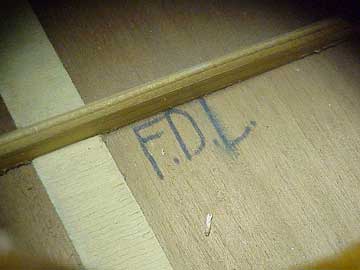
Me, too. It really kills resale value, too, doesn't it?
It's actually very easy to do a neat job of labeling your instrument in an inconspicuous
place so you can identify it later. (Sometimes it's hard to prove ownership, and
this technique can help.)
Many instruments, such as banjos and electric guitars have handy hiding places
under truss rod covers or pickup cavities where you can place identification. But
acoustic guitars and lots of other instruments make the job a bit more tricky
Here, I'm demonstrating by installing a "repair label"
identifying me as the repairman. I consider it reasonable to use this kind of marker
to eliminate confusion about the restoration done on older instruments. Like any
good restorative technique, it is completely reversible so no permanent damage is
done. Chances are, you'll want to use a label with your name, driver's license number,
etc.
Self-adhesive labels and tape have a habit of dropping out after years of drying
inside an instrument. If a paper label is affixed with ordinary amimal hide wood
glue, it can remain in place for centuries and still be easily removed with a bit
of warm water.
Most of us have access to a word processor, but any kind of writing
with waterproof ink will do. I just print out a label on a sheet regular white paper,
and cut it to size. I use transparent animal hide glue, but regular white glue or carpenter's
yellow wood glue will also do the job. Hide glue is easier to remove with warm water
than the white or yellow wood glues.
I make a dilute solution of regular hide glue, about 1/2 to 1/3 normal strength,
and warm the glue to the temperature of hot coffee, about 150 degrees Fahrenheit.
(No need to warm white or yellow glue.)
Hot Tip:
Mix up one envelope of KNOX UNFLAVORED GELATIN (1/4 oz.) in 1/3 cup hot water.
Now you have the same hide glue mixture I'm using here. The big secret is that hide
glue and gelatin are one and the same! (Check out the quickie article on using
gelatin for glue.)
Here, I'm dunking a label in my dilute glue:
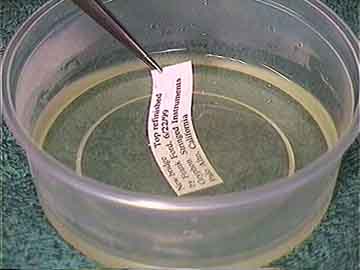
It's important to saturate the paper completely so that the label won't wrinkle when
it sticks to the wood.
You can reach inside the soundhole and place the label right up against the top of
the guitar, mandolin or whatever.
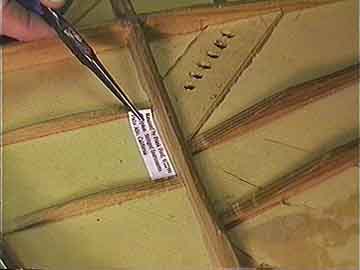
For this demonstration, I'm placing a label the way I would if I had the guitar apart
for restoration.
Once the label is in place I'll dab it lightly with a moist rag to remove the excess
glue from the surface and surrounding area:
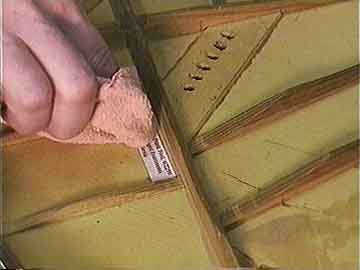
It's important not to rub the label, or I'll shred it.
After it has dried, the label actually looks quite professional and adheres perfectly
to the unfinished wood of the guitar top:
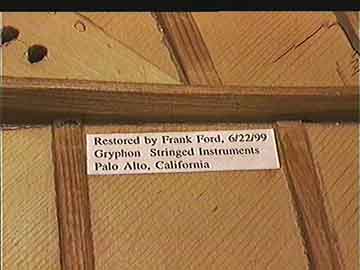
I can remove the label without a trace by holding a warm damp towel against it until
the glue is softened. Meanwhile, I have good permanent identification way up inside
where nobody will notice unless they know where to look.
Back to Index Page
